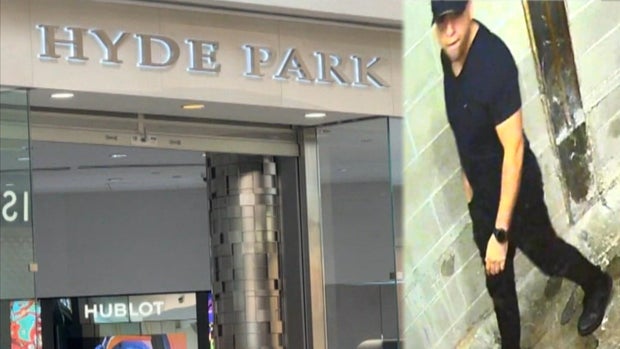AI Aids FBI in Unraveling $12 Million Jewelry Heist in Colorado
The Heist That Stunned Denver
In July, a meticulously planned jewelry heist at the Cherry Creek Shopping Center shocked the community and involved law enforcement agencies far beyond Colorado. The audacious crime, which led to the theft of jewelry and high-end watches valued at $12 million, raised questions about security and technological advancements in criminal investigations.
A Brazen Crime
Mark Michalek, the Special Agent in Charge of the FBI’s Denver branch, characterized the robbery as “brazen and sophisticated.” Despite the thieves’ careful planning, they made critical errors that left behind evidence for law enforcement to collect. Michalek’s insight serves as a reminder: "There’s no perfect crime."
Inside the Jewelry Store
The thieves targeted Hyde Park, a well-known jewelry store within the shopping center. They’ve set an elaborate plan in motion, cutting through a wall to gain access to the store. Using torches and drills, the crew spent an estimated eight hours stealing valuable items while evading detection. Their innovative approach suggested they went to great lengths to execute the heist.
The Disguise That Didn’t Fool Anyone
Surveillance footage revealed three suspects entering the Cherry Creek Shopping Center wearing fluorescent vests and construction hard hats. One suspect was seen carrying a tool box, seemingly attempting to blend in as part of a construction crew. Authorities believe this clever disguise was an essential part of their plan.
Photo Credit: CBS
The Vehicle of Choice
Law enforcement also released images of a dark-colored Ford F-150 used by the burglars. In their efforts to avoid capture, the thieves stripped the truck of its license plates, but their efforts were not enough to stay off the radar.
Enter Artificial Intelligence
After the heist, investigators tapped into a powerful resource: Flock Safety, a company specializing in license plate reader technology. By inputting vehicle descriptions into their system, investigators discovered that the F-150 had previously been spotted on Interstate 70 in Glenwood Springs, equipped with California plates.
Machine Learning in Action
Flock Safety’s spokesperson, Holly Beilin, described the process as using “machine learning technology,” showcasing how AI is revolutionizing criminal investigations. “The algorithm is constantly learning and is very accurate,” Beilin noted. This technological edge gave law enforcement a significant leg up in the investigation.
Tracking Down the Suspects
Following the vehicle identification, investigators obtained search warrants for cell phone data associated with the shopping center. This high-tech approach led them to Gustavo Salas-Ortega, one of the alleged thieves, who was found to be in the U.S. without legal authorization.

Photo Credit: CBS
Digital Footprints Leave Clues
Salas-Ortega’s cell phone showed similar travel patterns along I-70 as the truck, providing crucial evidence for investigators. Chris Gray, a crime analyst with the Denver District Attorney’s Office, stated, “The digital side has become a massive component in everything we do,” reflecting a broader trend in modern policing.
The New Age of Investigations
Gray elaborated that 70% to 80% of modern criminal investigations now involve a digital component. The importance of data-driven crime solving was evident in the success of this investigation, illustrating how technology can effectively assist human instincts.
Arrest and Charges
Following a thorough investigation, Salas-Ortega was arrested in New Jersey and now faces immigration violations alongside criminal charges of theft and burglary. Michalek confirmed that the suspects were part of a South American theft group known for similar crimes across the country.

Photo Credit: CBS
A Broader Investigation
Michalek also mentioned that the Salas-Ortega team is linked to other thefts and burglaries, which raises concerns about organized crime. These developments point to a larger network operating across multiple states, making the investigation much more complex.
The Implications of Digital Evidence
"Virtually every case has a digital element," Michalek shared, underscoring the growing reliance on technology in criminal cases. The successful apprehension of Salas-Ortega and his accomplices underscores a significant shift in how law enforcement approaches crime solving in the modern age.
Conclusion: The Future of Crime Solving
The Hyde Park jewelry heist serves as a testament to how artificial intelligence and advanced data analysis can enhance investigative capabilities. As law enforcement agencies continue to adopt modern technologies, the ability to solve crimes will likely improve, making it increasingly difficult for criminals to evade justice. The intersection of technology and crime prevention marks a defining moment in contemporary policing, illustrating that while criminals may try to outsmart the system, the omnipresence of digital evidence remains a formidable foe.







